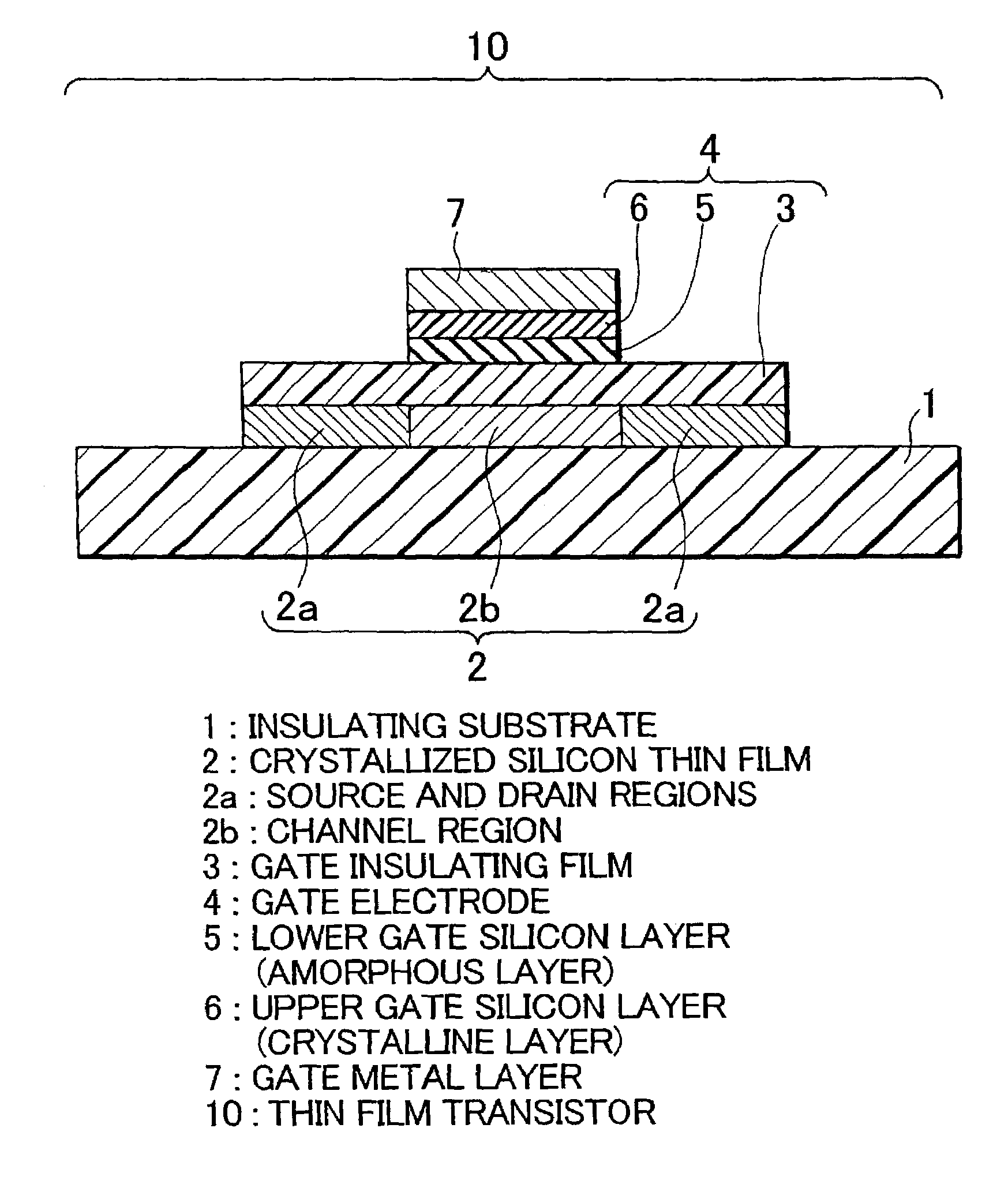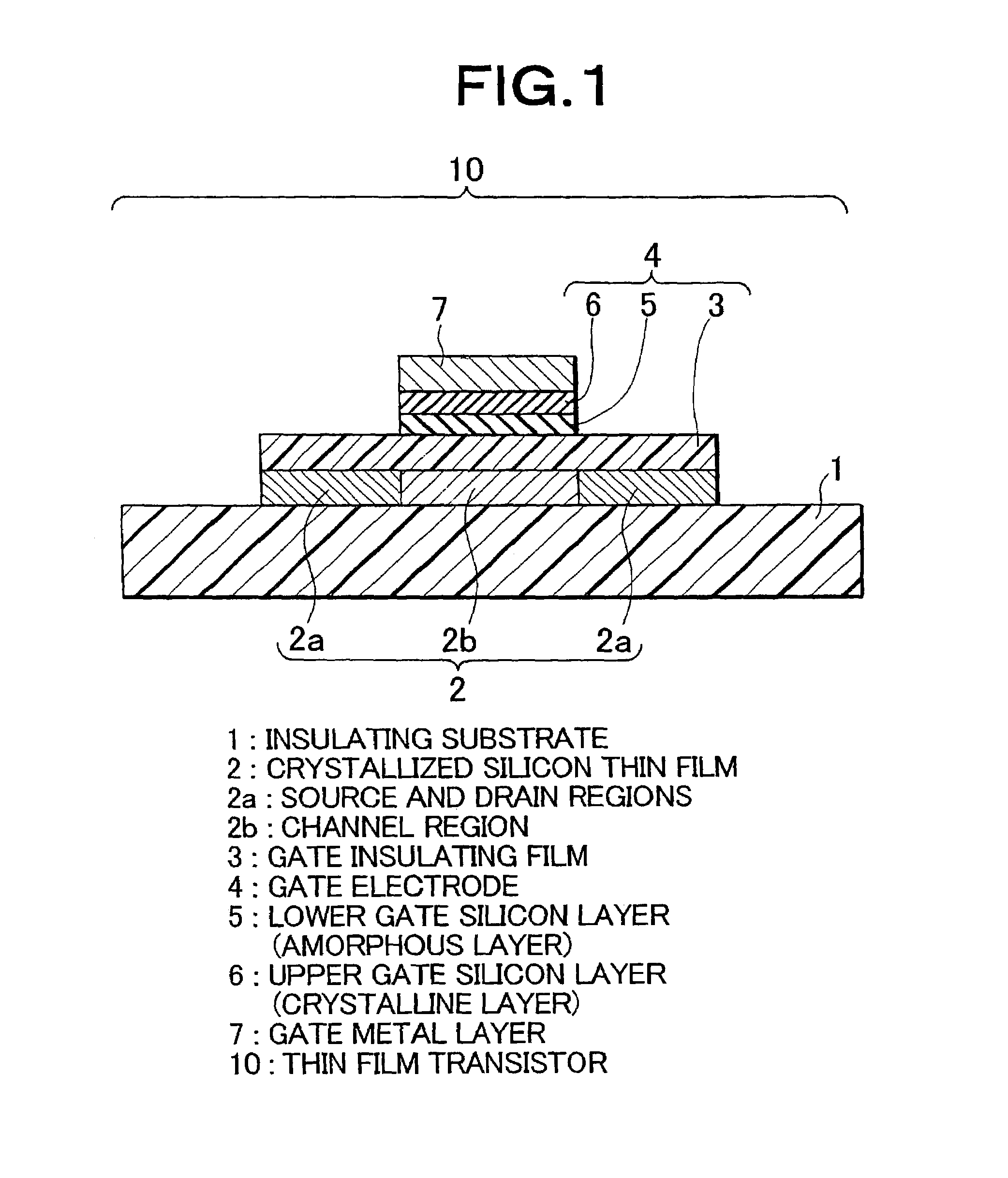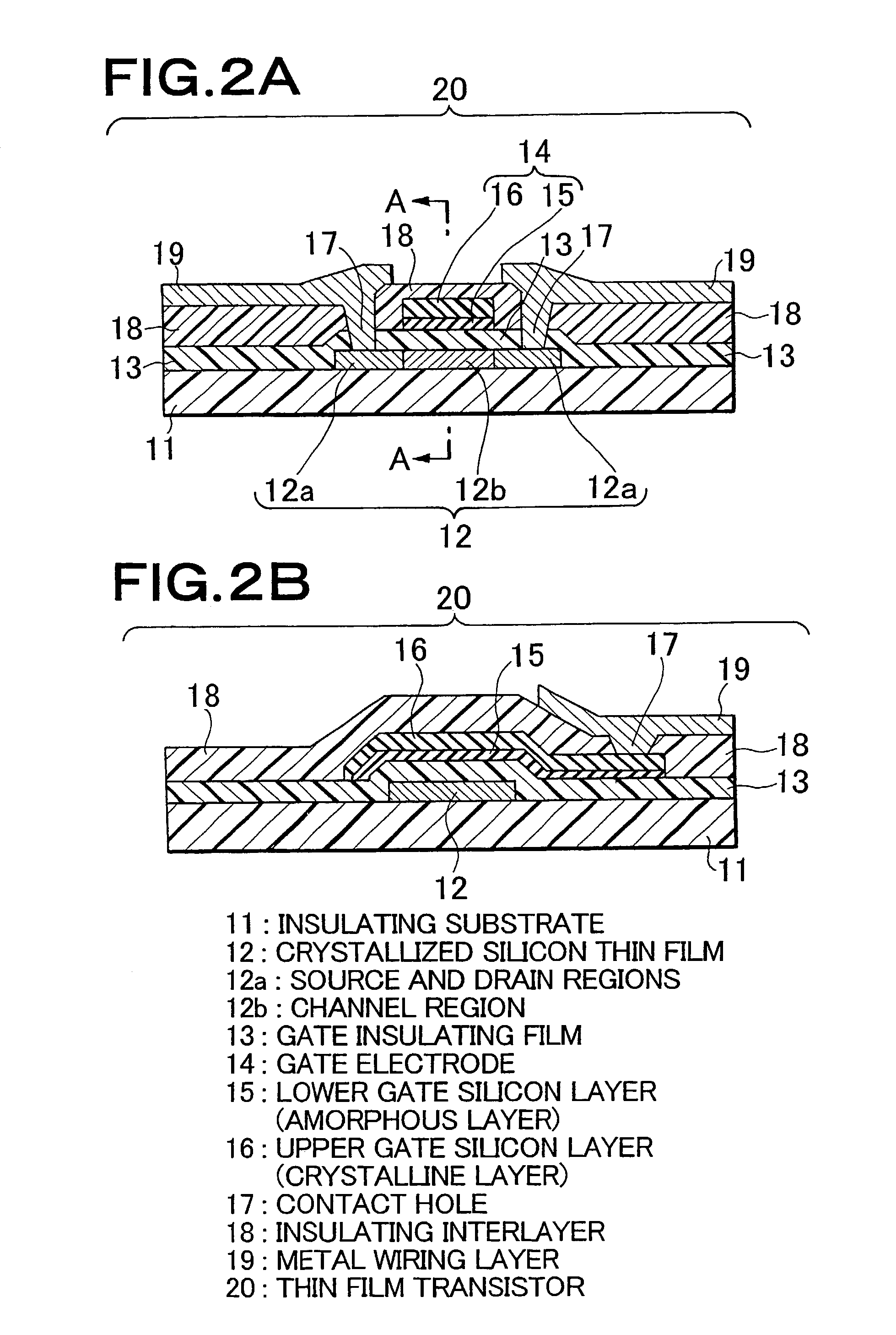Thin-film transistor and method of manufacture thereof
- Summary
- Abstract
- Description
- Claims
- Application Information
AI Technical Summary
Benefits of technology
Problems solved by technology
Method used
Image
Examples
first embodiment
[0038]the present invention will be described below with reference to FIG. 1. Reference numeral 10 shown in FIG. 1 denotes a thin film transistor.
[0039]The thin film transistor 10 comprises a crystallized silicon thin film 2 having source and drain regions 2a and a channel region 2b formed on an insulating substrate 1 as shown in FIG. 1, a gate insulating film 3 formed on the crystallized silicon thin film 2 and constituted by, e.g., a silicon oxide film, and a gate electrode 4 formed on the gate insulating film 3.
[0040]In this case, as the insulating substrate 1, a glass substrate is used. In addition, the crystallized silicon thin film 2 is formed by a non-doped (impurity-undoped) film, and the source and drain regions 2a are formed such that impurity ions such as phosphorous ions, boron ions or arsenic ions are implanted or introduced at a high-concentration by using an ion implantation method or an ion doping method to control valence electrons.
[0041]The gate electrode 4 compris...
second embodiment
[0044]the present invention will be described below with reference to FIGS. 2A and 2B. Reference numeral 20 shown in FIGS. 2A and 2B denotes a thin film transistor.
[0045]The thin film transistor 20 comprises a crystallized silicon thin film 12 having source and drain regions 12a and a channel region 12b formed on an insulating substrate 11 as shown in FIG. 2A, a gate insulating film 13 formed on the crystallized silicon thin film 12 and constituted by, e.g., a silicon oxide film, and a gate electrode 14 formed on the gate insulating film 13 and above the channel region 12b.
[0046]In addition, the gate electrode 14 comprises an insulating interlayer 18 formed on the uneven portion of the gate insulating film 13, and a metal wiring layer 19 shown in FIGS. 2A and 2B and made of aluminum buried in contact holes 17 formed in the insulating interlayer 18 and the gate insulating film 13. In this manner, a reduction in wiring resistance can be achieved.
[0047]In this case, the gate electrode...
third embodiment
[0070]a thin film transistor according to the present invention will be described below with reference to FIG. 8. Reference numeral 30 shown in FIG. 8 denotes a thin film transistor of this embodiment.
[0071]The thin film transistor 30 comprises a crystallized silicon thin film 22 having source and drain regions 22a and a channel region 22b formed on an insulating substrate 21 as shown in FIG. 8, a first gate insulating film 23A formed on the crystallized silicon thin film 22, a second gate insulating film 23B formed to cover the uneven portion of the substrate, and a gate electrode 24 formed on the second gate insulating film 23B. In addition, the thin film transistor 30 further comprises an insulating interlayer 28 formed on the uneven portion and a metal wiring layer 29 buried in contact holes 27 formed in the insulating interlayer 28 and the second gate insulating film 23B.
[0072]In these components, as the insulating substrate 21, an insulating substrate obtained by stacking a su...
PUM
 Login to View More
Login to View More Abstract
Description
Claims
Application Information
 Login to View More
Login to View More - R&D
- Intellectual Property
- Life Sciences
- Materials
- Tech Scout
- Unparalleled Data Quality
- Higher Quality Content
- 60% Fewer Hallucinations
Browse by: Latest US Patents, China's latest patents, Technical Efficacy Thesaurus, Application Domain, Technology Topic, Popular Technical Reports.
© 2025 PatSnap. All rights reserved.Legal|Privacy policy|Modern Slavery Act Transparency Statement|Sitemap|About US| Contact US: help@patsnap.com



